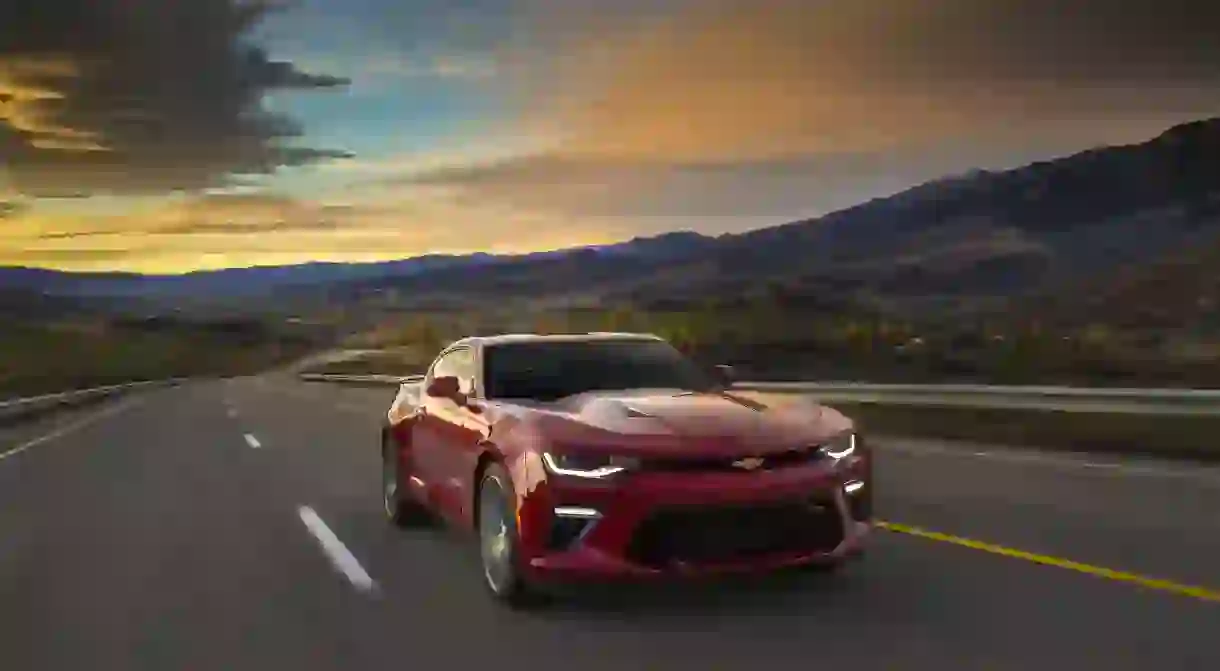The Future of the American Sports Car

Sports cars are a huge part of American culture, but the world around them is changing. How will the classically American automobile evolve in a world of electric and self-driving cars?
From the Ford Thunderbird in Thelma & Louise to the Chevrolet Camaro in Transformers, the American sports car has always played a large role in the culture of the country. The long interstate highways of America are made for fast, exciting cars, and the great American road trip has always been intertwined with the performance, muscle and brute force of America’s most sought-after vehicles. But the way we move around is changing, leaving a question mark over the future of the American sports car.
The concept of a sports car is simple: a race car that is also roadworthy, featuring superior power, handling and usually style, in comparison to other cars. They’ve been around since the turn of the 20th century, and are the ultimate status symbol. But as the world becomes more environmentally conscious and drivers’ tastes shift, cars like the Camaro are evolving.
There are many arguments over which manufacturer produced the first American sports cars, but it’s thought to be the Stutz Bearcat, launched in 1912. The car was no more than two seats, an engine, a gas tank and a bare minimum chassis, but together with the Mercer Raceabout, launched a genre of car Americans would take great pride in.
“It’s a big part of American culture, and it changes with the times,” says Harlan Charles, product marketing manager for Corvette and Camaro at Chevrolet. “It’s about America’s wide-open spaces, enjoying cars and road trips, and being able to enjoy fun roads and twisty roads as well as interstates.”
In the 1950s, two cars were built that would really define the American sports car: the Chevrolet Corvette, which went on sale in 1953, and the Ford Thunderbird, which was released two years later. The Corvette is still in production today, although vastly different, and Chevrolet also has the Camaro, which first went on sale in 1966 as a competitor to the Ford Mustang.

Over the years many sports cars came and went, but the industry hasn’t seen a monumental shift as those currently on the horizon. Electric cars are on the rise, with Tesla coming close to becoming the world’s most valuable car manufacturer in the summer of 2018. Numerous other automakers have rushed to produce electric cars, and there have even been electric sports cars, such as the Tesla Roadster, and an upcoming Porsche vehicle currently called Mission E.
Technology has also made its way inside the cars, and not just in the engine. Car buyers now expect Wi-Fi, GPS, collision detection and more in their vehicles, and manufacturers have been happy to supply them. It may not exactly fit in with the image of the quick car on an open road, but Charles says they are a popular option.
“I think the customers want high technology. We have the Performance Data Recorder, which can record lap times and creates video on the car,” he says. “We’ve introduced things like frontal collision alert, [also] the camera mirror, where the rear-view mirror is a video screen and it really helps the visibility out the back of the car.
“We always want technology that enhances the driving experience. People love the cars and the design, but the car is also an experience. Anything we can do to help the driver have more fun and excitement and more of an experience is good versus technology that would take away from that. Every time you get into the car should be a special event.”
The way fans of the cars gather online and express their opinions has also changed how sports cars are manufactured.
“It’s a big influence because Camaro is really a fan-based car,” Charles says. “They’ve taken ownership of the car. There are big Camaro forums. They are a big influence because they feel that it’s their car, and they let you know right away if they like changes or don’t like it.”
An even larger shift than both in-car technology and electric vehicles could yet be on the way. A number of companies are working on self-driving cars. Should these vehicles become mainstream, it may not be long before vast numbers of people don’t own a car at all, and instead are ferried around in driverless pods. This vision of the future threatens to consign the sports car to the museum, but Charles isn’t so sure this will ever happen.
“Although these technologies will come and start to dominate,” he says, “I think there will still be a place for a true sports car.”
Culture Trip was a guest of Chevrolet during the reporting of this article.













